6+ Qualitative Research Plan Examples to Download
Every drop counts. Because research requires the input of resources—money or kind—it should have a justified return. You may be fine with throwing away a few dollars, but what about thousands of dollars? And what if you could shorten five months of hard labor into half? Think of all the other things you could have done with your time and money. When you have a research plan, you can save yourself the avoidable hassle of losing your mind to stress at 3 AM.
Before the board or your academic mentors give your study a signal, you have to show them that you know what you’re doing. A research plan is your research roadmap. And like any map, you use the plan to steer you and your team in the right direction. In essence, it is a document that reminds the researcher of the important details about the study.
Plan vs. Proposal
A research plan is different from a research proposal. Although both talks about the study, the proposal is meant to sway opinion to favoring the conduct of the study. You also use proposals when you want to acquire study grants from higher institutions. A plan is for your perusal. As a researcher, you tend to become immersed in your study. By following all the promising trails, you may get lost in the process. Having a plan at arms reach lets you keep yourself on track. When you include a project timeline in your document, you can also track your progress along the way.
Qualitative vs. Quantitative
The rift goes way beyond numbers or the lack of thereof. The difference between the two isn’t because one is better than the other. In fact, a lot of research fields can benefit from the input of both methods. The choice between the two lies in what kind of question you want to answer. Qualitative research is appropriate for pioneer studies or those that require a deeper understanding of opinion, experiences, and encounters. Some things cannot be reduced to ones and zeroes. There are different methods for performing qualitative research. You can use interviews, focus groups, surveys, or observations. The versatility and cost-effectiveness of these methods make them a popular resort to researchers.
However, we cannot reduce quantitative research as a cold way to see the world. Quantitative research places measurements on things like opinion, behavior, and other variables. This method is more analytical and structured than qualitative research. Because most of the subjectivity is removed in data collection and analysis, the findings that are true for a small group can be used to generalize a bigger population. Most research in hard sciences is quantitative because the replicability of the results generally makes for credible results, especially when the only witnesses of the described event are the scientists in that lab. This research also makes use of surveys and questionnaires, provided that the observations can be represented in numerical data afterward.
Plan Framework
In general, the plans adhere to the same format, although you can see derivations in the names of the headers or the arrangement of the sections. The document is like a proposal, except that the details are made for the researchers themselves. Research plans can be a precursor to research proposals. Hence they tend to have similarities in the document structure.
Research Question: This is the cold brew of your research study that kickstarts the entire research endeavor. This is the challenge or the issue that you want to address with your study. When you have a poorly-defined research question, you might as well forget about getting that research grant. The question is a lead on what the study will cover and the gaps in related literature.
Hypotheses: These are your well-educated predictions on the results of the study in answer to your research questions. Your entire research design is grounded in testing these hypotheses. That is why your guesses must be backed by established and credible information. It is also these hypotheses that will be supported or refuted by succeeding studies.
Objectives: Objectives will influence the research design because what you want to accomplish will direct the methods you’ll use. When well-defined, they will steer you straight in the right direction. This means that they should be appropriate for your study. In devising your objectives, you should remember to make them specific, measurable, achievable, relevant, and time-based.
Research Design: Because a research plan is like a rough sketch of your study, it includes your actual plan on how you will perform your investigation, as well as your list of materials and equipment. The details don’t have to be refined and specific, but they should convey the general idea. You can create a research flowchart of your methods to visualize the process better. Aside from being a map of the research, it is also an inventory check to see if you have the things you need for the study.
Examples of Qualitative Research Plans
People learn by example. Check out the following qualitative research plans that would help you with your content. You can download these PDF files as your guide.
1. Research Plan Sample
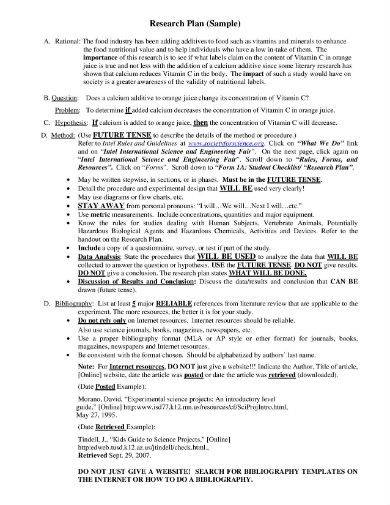
arase.org
2. Research Plan Guide
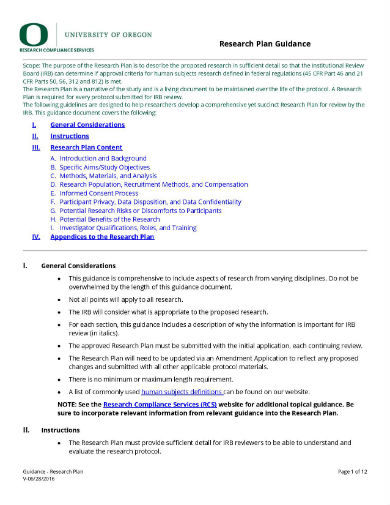
rcs.uoregon.edu
3. Research Plan Abstract

grants.nih.gov
4. Research Plan Outline
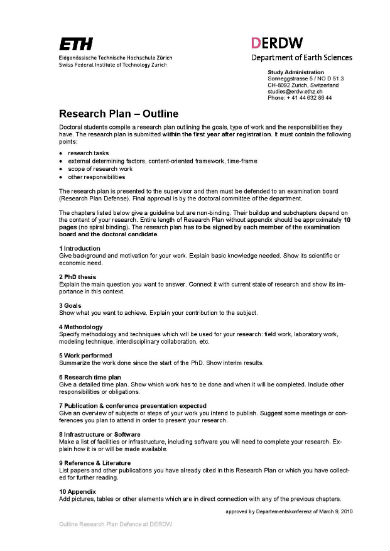
ethz.ch
5. Research Plan Example
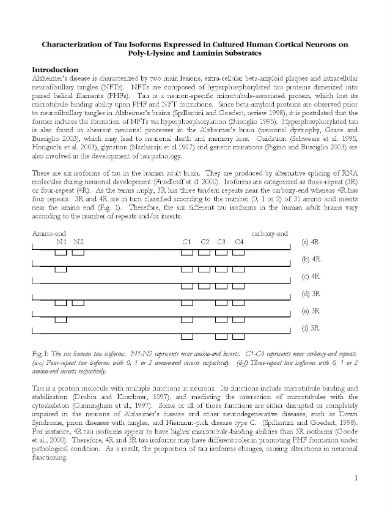
urop.uci.edu
6. Funded Research Example
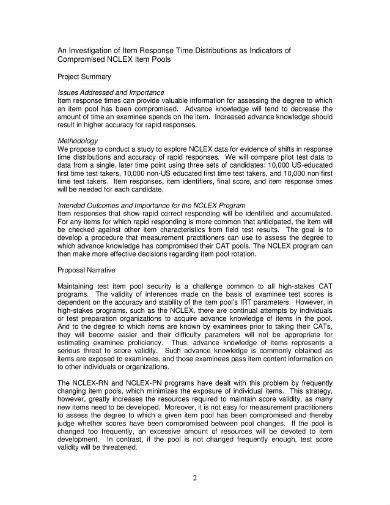
ncsbn.org
7. Data Analysis Plan
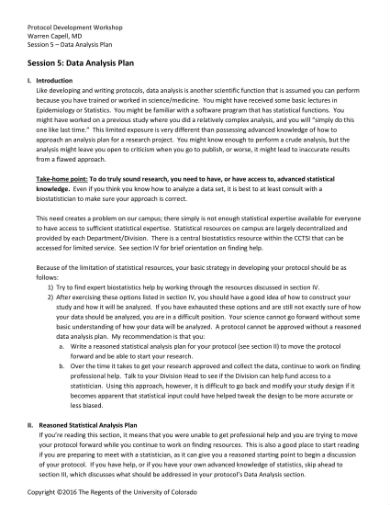
ucdenver.edu
Preparing a Research Plan
Your research plan is for your use. It is meant to guide you throughout the entire research conduct. However, when you’ve set your standards too high and your plan is too idealistic, your performance and results might disappoint you. How do you make a plan that will work for you?
1. Research Your Research
When you want to answer a problem, you first have to be knowledgeable about it. Especially when you are applying for a research grant, your benefactors should have the impression that you know what you’re doing. You have to scour sources for related literature. Maybe the study has already been done, or there is a similar problem that has already been solved. By being diligent in your literature review, you can get a grasp of the issue’s relevance to society. Because you are learning more about the subject, you can identify methods and approaches that you can apply. By now, your study is taking shape.
2. Draw a Complete Map
This is a large section of your research plan. It describes what you want to come out of this study and your expectations. You will also write about your course of action to realize those goals. There is a domino relationship shared by your research questions, objectives, and methodology. The former two determine your methods. And the three will have a significant bearing on your results. You can use established methods provided that you justify why you use them. You can be as specific as possible. But because the plan is preliminary, you can expect changes along the way.
3. Be Practical and Realistic
As a researcher, you would want to make a significant contribution to the world. However, being too ambitious without the capacity to back it up will have negative consequences for your study. Therefore, when you plan a study, you have to look at your available resources. If you plan on procuring materials for the study, will they arrive on time? Is your expected schedule for deliverables realistic? Is your expectation for the study reasonable? You can add a timetable and a breakdown of foreseen expenses in your plan. That way, you can stick to your schedule and your budget.
4. Track Your Progress
Your research plan should be with you throughout the study period as a reference. You can view it to review your next steps or spot the ones you missed. Will the activities still fit the determined period? The chances that you will run out of time on an activity. Don’t create a rigid time frame. The future is unpredictable, so you should include a time allowance for each activity. You can also use Gantt charts to monitor your progress. The charts will let you see how much you have accomplished and how much work is left.
In any research endeavor, it pays to be prepared. We can’t predict the future, but when we have a plan on how to live with this uncertainty, we can mitigate losses. As a researcher, you can integrate research plans in the conduct of your studies. The document can influence the success of your investigation.


